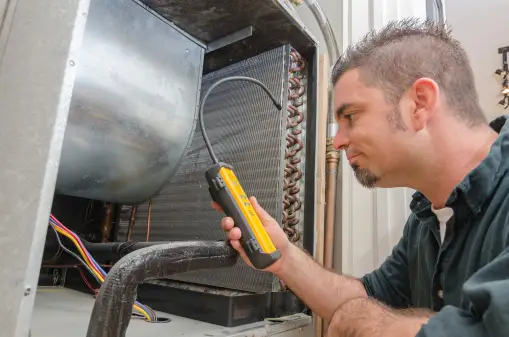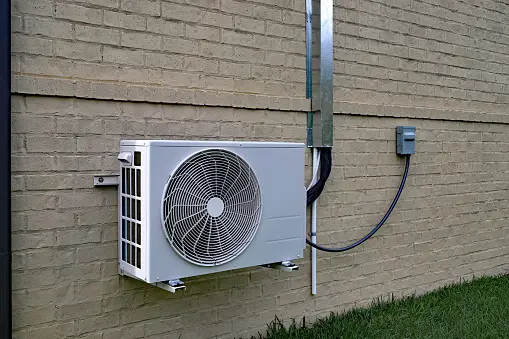As the scorching heat of summer sets in, air conditioning becomes a welcome relief, transforming sweltering interiors into cool and comfortable spaces. But have you ever wondered how your AC unit manages to create that refreshing coolness?
In this blog post, we’ll delve into the inner workings of air conditioning systems, unraveling the mechanics behind their cooling capabilities and exploring whether AC units truly have the power to cool our homes.
How Air Conditioning Works:
- Refrigeration Cycle: At the heart of every air conditioning system lies the refrigeration cycle, a complex process that involves the transfer of heat from one place to another. The cycle begins with a compressor, which compresses refrigerant gas, raising its temperature and pressure.

- Heat Exchange: The hot, high-pressure refrigerant gas then flows through a series of coils known as the condenser coils, located outside the home. As the gas condenses into a liquid, it releases heat into the surrounding air, causing the refrigerant to cool down.

- Expansion Valve: The cooled refrigerant liquid passes through an expansion valve, where its pressure drops, causing it to evaporate into a gas once again. This process absorbs heat from the indoor air, cooling it down in the process.

- Evaporator Coils: The now-cooled refrigerant gas flows through a set of coils called evaporator coils, located inside the home. As warm air from the interior is blown over the coils by a fan, the refrigerant absorbs heat from the air, cooling it before being circulated back into the room.

- Air Circulation: The cooled air is then distributed throughout the home via a system of ducts or vents, providing relief from the summer heat. Meanwhile, the warm refrigerant gas returns to the compressor to begin the cycle anew.

Does AC Really Cool Our Homes? While air conditioning systems do indeed create a cooler indoor environment, it’s important to understand that they do not actually lower the temperature of the air. Instead, they remove heat from the indoor air, resulting in a perceived cooling effect. By circulating chilled air and removing excess moisture, AC units create a more comfortable and livable environment during hot weather.
Air conditioning systems play a vital role in maintaining indoor comfort and temperature control, especially during the sweltering summer months. By harnessing the principles of refrigeration and heat exchange, AC units effectively remove heat from indoor spaces, creating a cooler and more pleasant environment for occupants. While they may not directly lower the temperature of the air, their cooling capabilities provide much-needed relief from the summer heat, allowing us to stay comfortable and productive indoors.
Disclaimer: The information provided in this blog post is for informational purposes only. While efforts have been made to ensure the accuracy and reliability of the information presented, the functioning of air conditioning systems may vary based on factors such as system design, maintenance, and environmental conditions. Additionally, it is advisable to consult with a qualified HVAC professional for specific advice regarding air conditioning installation, maintenance, and repair. The author and publisher of this blog post shall not be held liable for any damages or losses arising from the use of or reliance on the information provided herein.
- Where Can I Buy Kitchen Mats Online in India? – Top 5 Trusted Websites
- Transform Your Kitchen Comfort with the VELUZA 3-Piece Anti-Slip Soft Diatomite Kitchen Mat Set
- 🧹 Top 8 Broom and Mop Sets in India (2025 Budget Picks)
- Best Storage Containers for Indian Kitchens – Amazon Picks 2025
- Top 5 Electric Kettles in India Under ₹1000 – 2025
- 📱 The Ultimate Smartphone Buying Guide – 2025 Edition











